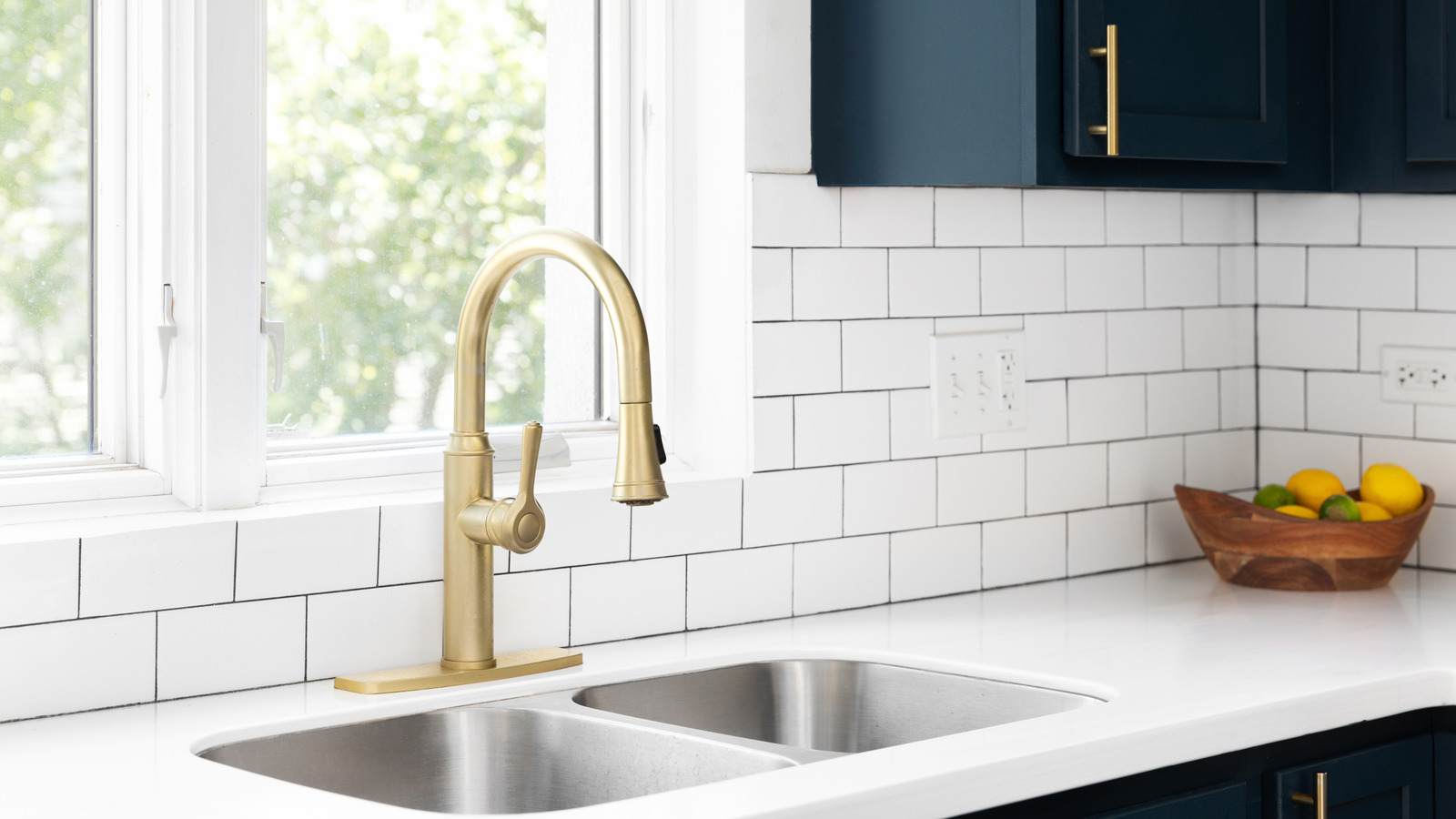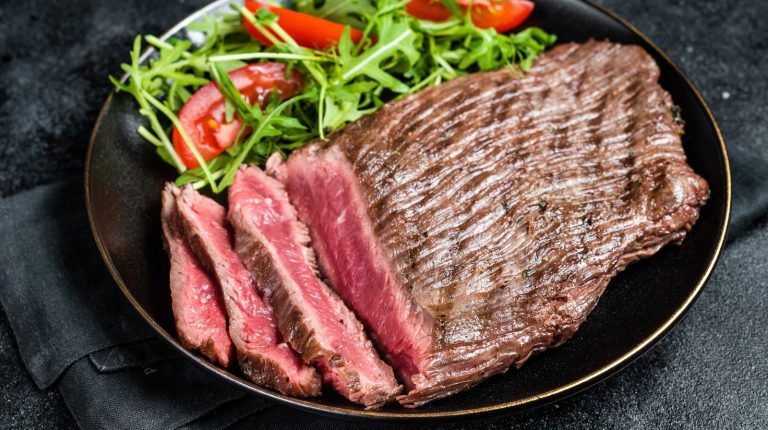In the world of kitchen renovations and remodels, there are multiple mini-projects that need to get done as part of the larger, prettier picture. In addition to swapping out those old appliances, replacing old cabinets, and refinishing floors, you’ll likely also need to update that old, stained, crusty kitchen backsplash. The backsplash feels a little forgotten in the kitchen — protecting the wall dutifully from splatters, spills, and whatever else your stovetop can throw at it. But getting a new, functional yet aesthetically pleasing option can have a big impact on the overall look and feel of your kitchen.
My husband, Kyle Nicholson, and I have been renovating and remodeling for several years. I’m pretty good at finding cute stuff on Pinterest, and he has over 20 years construction experience and has proven himself an expert in home remodeling and renovation. He single-handedly renovated our previous home and is currently building (and acting as General Contractor) for our new home. He is also a Certified Healthcare Constructor and works as a superintendent for a commercial construction company. So, he’s an expert on all things home renovation, and knows a thing or two about kitchen remodels. Here are the biggest mistakes to avoid when renovating a kitchen backsplash.
Ending too low
Placement for your backsplash is pretty important and fairly cut-and-dry. You’re likely going around your stovetop or oven, following a wall, and likely anywhere food prep will occur. According to O’Hanlon Kitchen & Bath, you’ll want to run the backsplash between upper and lower cabinets, though some homeowners go higher — even to the ceiling for a more “high-end” look. The real issue isn’t going too high with the backsplash — it’s stopping too low.
“If you have upper cabinets you ideally want to go to the bottom of the upper cabinet. For all intents and purposes — and there aren’t uppers or an area with a clear stopping point — a minimum of 18 inches should suffice,” says Kyle Nicholson. Ending your backsplash too low could mean that your wall behind a cooking prep or generally messy area isn’t going to be protected, resulting in splatter, caked-on sauces, and general mayhem on your drywall. Better safe than sorry — end at a minimum at the bottom of those uppers, and, if you’re feeling fancy, go even higher, especially around open shelves for a true conversation piece.
Mismatching styles
It’s important to pick a style and stick with it. In your daily fashion, you wouldn’t mix stripes and plaid, or polka dots and florals, right? The same rules apply to your kitchen. If your home is more in the vein of Swedish farmhouse — minimalist, black and white, clean lines, and very little clutter — you wouldn’t want a busy, beige backsplash with Tuscan grapes and olives etched in. Be cognizant of your feel, vibe, and style before picking your new backsplash.
There are plenty of timeless, safe choices. Options like white, grey, or black subway tile; small mosaic tile with a pop of color; and retro-inspired thermoplastic that mimics aluminum are all fairly neutral choices in a space. In removing the backsplash, according to Kyle Nicholson, you’re basically starting from scratch, anyway, so don’t be afraid to treat the project as such. “Depending on the installation, it could involve complete removal of the drywall behind it. It could require delicate demolition around electrical outlets, light switches, plumbing fixtures.” That said, picking a tile or backsplash is the last fun part of the project, so stay true to your overall home vibe and style and you’ll be happy.
Uneven alignment
Do you wake up in a cold sweat when you see images of uneven alignments on flooring, tiles, and patterns? Me, too. There’s a legitimate condition called trypophobia in which the subject has a strong adverse reaction to uneven patterns, holes, and such. I had a friend who, at the sight of a bunch of floor tiles with one unevenly spaced, would become nauseous. That said, you should probably pay attention to uneven alignment when it comes to your backsplash. You don’t want to make your friends and family feel ill.
According to Kyle Nicholson, there are a few ways to make sure your backsplash tiles, mosaic pattern, or whatever you’re using has a nice, even alignment. “Make sure to use your spacers! You won’t end up with a level, even, plumb surface without them. Every now and again, take a step back from what you’re doing to make sure things aren’t looking askew. It’s hard to see small deviations up close, but they can aggregate into a large deviation if you aren’t careful.” When Kyle laid out our backsplash in our previous home, he was constantly stepping back, using a very expensive and cool laser, and ensuring he was perfectly even. He couldn’t use the countertop, since our floor had a very slight tilt to it. Doing so would’ve resulted in a slightly uneven alignment on the backsplash — and would’ve likely driven us both insane.
Using too much mortar
For the uninitiated, mortar is the stuff you slather on the back of your tile to get it to stick to the wall. If you’ve never tried tiling or installing a backsplash, it may seem like adding mortar isn’t any more difficult than slapping some glue on the back of construction paper to make a collage with your five-year-old. You’d be wrong.
In fact, when asked about one of the mistakes he’s made in home renovations over the years, Kyle Nicholson admits it was backsplash-related. “Overuse of mortar. Small tile requires very little mortar behind it. But, that being said, you have to make sure there’s a good bed of mortar behind the surface of every tile. Gaps can result in cracking.” Sure enough, if you consult the experts at the Home Depot, it’s advised to spread a thin layer of mortar onto your backer board with your trowel at about a 45-degree angle, then laying your tile. Kyle added a bit more mortar on the backs of each tile when we did ours, but it really isn’t necessary and can result in too much mortar, which can ooze out, cause tiles to slip, and form cracks over time.
Choosing an unflattering grout color
If you’d asked me, I would have told you that grout and mortar are the same and it’s the stuff that goes behind and between all the tiles in a backsplash. This is why I’m not in charge of tile jobs in the Nicholson household. Grout is a combination of colorant, cement, and water necessary to seal the points between your tiles. In a kitchen backsplash, your grout has the job of keeping out not only moisture, but spills, splashed sauces, and whatever other cooking mayhem arises. It also helps the tiling look finished overall. And, to have it look finished and professional, you’ll want to choose a color grout that melds with the rest of your backsplash.
There are a few important things to consider when choosing your grout color. First, do you want to really see the grout? Or do you want everything to blend together? For example, if you’re doing white subway tile for your backsplash, a white grout is going to give the backsplash a seamless and airy feel. But it could feel boring to some. If you’re looking for a more modern edge, choosing a black grout will allow your white subway tile to practically pop off the wall and make its own statement. From there, choose cool tones for cool-colored tiles and warm tones for warm-colored tiles. Regardless of your color choice, though, Kyle Nicholson says, “Grouting needs to be done per the manufacturer’s directions on the container. Be sure to read them carefully and follow them to a T. Not doing so can totally ruin all your hard work.”
Forgetting about your oven hood
Just as there are natural stopping points for your backsplash — like the end of a wall, a window, an appliance, or a large full cabinet or pantry, there’s a natural way to get your backsplash around and behind your oven range hood to help protect your wall from splatters and splashes. Many contractors and kitchen remodelers recommend running your backsplash behind the cooktop and, thus, the oven vent hood and fan to protect the wall in what’s arguably the messiest cooking area. It also helps make a focal point in the kitchen.
If you’ve laid out your backsplash and forgot about your oven hood, you may need to reassess your plans. Most professionals (including Kyle Nicholson) advise putting your backsplash tile on first, then installing your hood. Doing so will prevent you from having to try and cut tiles around the hood later. That said, if you are thinking about using a professional for your kitchen renovation, this could be the portion of the project to do it. Cutting tile is no joke unless you have the right equipment, and correctly installing an oven hood is an important safety precaution.
Leaning into a trend
Perusing Pinterest is still a vibe for those deep in the renovation trenches, like yours truly. A skylight here, a touch of wallpaper there, or maybe a bit of green mosaic tile for your backsplash? There are thousands of options on digital pinboards, magazines, and on social media. And, often, there are prevailing trends that seem to takeover everything for months or even years at a time. Remember Millennial grey? Gold utensils? Me, too. When it comes to your backsplash, leaning too hard into a trend could mean that your design won’t stand the test of time.
According to The Spruce, designers are sort of over the all-things-subway-tile vibe of the 2015-2020 world. Subway tile can have its charm — especially for those on a budget. But it can feel dated with overly contrasting grout or a basic stacked pattern. Mosaic tile — which, for the record, is a pain to install — also feels a little tired these days. Instead, lean toward perfectly imperfect tile, soft, natural vibes, and maybe something a little understated. Though these things are “in” now, they’re also not controversial in terms of style, so should retain resale value for years to come.
Using a porous material
When it comes to choosing your backsplash, efficiency and safety are the number one most important aspect. This is your kitchen, after all. According to Kyle Nicholson, there are some rules you’ll need to follow when choosing your backsplash material and some types of material to stay away from. “Anything wood-based unless it’s some sort of protected wood that can handle constant exposure to heat and moisture. You should avoid porous materials because of the nature of what the backsplash is doing. It’s protecting against splattered spaghetti sauce, spilled wine — those things can seep in and stain. You’re not going to get that out. Metallic is a bad choice, too, unless it’s something special that can withstand exposure to heat, water, and acid. They can start to corrode, rust, or oxidize.”
So, what can or should you choose? According to Kyle, “The traditional things — sealed stones, tile, thermal plastics. All of those items are resistant to staining, can hold up well to heat and moisture. They can all be easily wiped down and cleaned, too.” You may think that a new, cool stone or polished wood would be a new, different, and cool vibe, and you may be right, but do yourself a favor and stick to the tried-and-true materials for this part of the kitchen.
Not paying attention to outlets
As you’re getting your backsplash on the wall, chances are you’re going to be working a bit of a puzzle. Cabinets, vents, appliances, and outlets are all areas you need to plan around as you work your way across the wall. Outlets, especially, need special attention. As you’re demoing, you’ll need to first take note of anything untoward going on in the wall. According to Kyle Nicholson, “If demo reveals any concerns with mechanical, electrical, or plumbing near the demolition area, you’ll want to call someone in. If mold or mildew is found building up on drywall behind the old backsplash, you’ll need to remediate that. And if you just reach a point where you aren’t comfortable — better to be safe than sorry.”
That said, electrical outlets may need to be checked and addressed by an electrician since they have to do with building codes. If you’ve gotten squared away, and are ready to tile, according to the Spruce, “Bring the tile close to the faceplate and outlet box perimeter. This will allow you to lay the faceplate over the outlet. Just make sure that the tile isn’t so close that it covers up the outlet’s screws or hampers its removal.”
Forgetting where it ends
All good things must come to an end, and your backsplash is no different. If you’ve sketched out your plan correctly and know how low, how high, and how far your backsplash needs to go, it’s imperative that you take into account where it ends. Some kitchens may have a natural end point — like a refrigerator, tall cabinet, or the end of the kitchen wall itself. If you don’t have that natural endpoint, you’ll need to get a bit creative and create your own stopping point.
According to Kyle Nicholson, as you get ready to end your backsplash, “Make sure to use levels and do not rely on the countertop for your first course of tile! …the countertop may not be level, and if you don’t have a clear ending point that’s going to hide your termination — like an upper cabinet — then you may be left with an unlevel top, which will be super noticeable and an eyesore.” On each side of your backsplash, then, make sure you know where your stop point is. A top cabinet — or a creative floating shelf — for the upper portion; the countertop or a line of caulk for the bottom portion; and a trim border for sides that don’t have a natural termination (like an appliance or the end of a wall).




